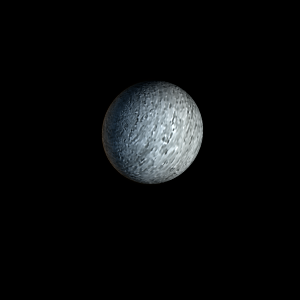| Scientific (actual) data |
|---|
| Planet | WASP-12 b |
| Planet status | Confirmed |
| Planet mass | 1.47 |
| Mass sini | 1.46 |
| Radius | 1.9 |
| Orbital period | 1.09142 |
| Semi major axis | 0.02344 |
| Orbit eccentricity | 0 |
| Inclination | 83.37 |
| Angular distance | 0.000054 |
| Discovered | 2008 |
| Updated | 2022-03-07 |
| Tzero tr | 2457100 |
| Impact parameter | 0.339 |
| K | 226.4 |
| Temperature (kelvin) | 2593 |
| Publication | Published in a refereed paper |
| Detection type | Primary Transit |
| Mass detection type | Radial Velocity |
| Radius detection type | Primary Transit |
| Molecules | C, CH4, CO, CO2, Ca, Fe, H, H2, H2O, HCN, He, Mg, Na, Ni, O I, SiO, Ti, TiO, VO |
| Star name | WASP-12 |
| Right ascension | 97.64° |
| Declination | 29.67° |
| Mag v | 11.69 |
| Mag i | 11.03 |
| Mag j | 10.48 |
| Mag h | 10.23 |
| Mag k | 10.19 |
| Star distance | 432.5 |
| Star metallicity | 0.3 |
| Star mass | 1.434 |
| Star radius | 1.657 |
| Star sp type | G0 |
| Star age | 1.7 |
| Star temperature | 6360 |
| Wikipedia article | WASP-12 b |
Back
| |
| Fictional info (?) |
|---|
| Suggested name | Pechu'rya |
| Planet type | Hot gas giant |
| In English, Pechu'rya is often referred to as the "red planet" because the Fe, prevalent on its surface gives it a slight red appearance that is recognizable among the astronomical bodies visible to the naked eye.
It is a hot gas giant planet with a mass one-thousandth that of WASP-12, but two-and-a-half times that of all the other planets in its solar system combined. It is named after the deity Pechu'rya, the messenger of destruction.
Pechu'rya's axis has the smallest tilt of any of its solar system's planets. Its orbital eccentricity is the largest of all known planets in its solar system; at perihelion, Pechu'rya's distance from WASP-12 is only about two-thirds (or 33 pct) of its distance at aphelion. The polar regions are constantly below 162°K (-111°C).
The outer atmosphere is visibly segregated into several bands at different latitudes, resulting in turbulence and storms along their interacting boundaries.
This planet is often known for its aggressive earth-like bacteria, the "Yupifu", that spend their life at the sea by eating something called Mepekya Myu in the shade. Yupifu are related to Chuneso'yogya but have 4 legs and vary in length from 24 to 42 cm. The Yupifu are known to withstand temperatures from -50 to 10°C and high atmospheric pressure. |
| Estimated population | 2600000 |
| Atmosphere | H2, | 32% |
| Fe, | 20% |
| Ti, | 17% |
| I, | 11% |
| SiO, | 7.8% |
| Ca, | 6.8% |
| HCN, | 2.1% |
| He, | 0.59% |
| CO2, | 0.55% |
| O | 0.42% |
| H, | 0.35% |
| H2O, | 0.28% |
| Mg, | 0.046% |
| CO, | 0.037% |
| Ni, | 0.0088% |
| C, | 0.0026% |
| TiO, | 0.0011% |
| Na, | 0% |
| CH4, | 0% |
| VO | 0% |
| Atmospheric pressure | 60 bar |
 |
| Moon | Nubyanu-myu | Very small round oceanic moon |
| Gyadon Ita | Very small slightly egg-shaped rocky asteroid |
| Teyukyo Ke | Very small irregular ice moon |
| Zundo | Small slightly egg-shaped gaseous asteroid |
| Myutapo'mya | Medium-sized potato shaped crater-filled moon |
| Kuhyo Nyobya Ra | Medium-sized potato shaped crater-filled planetoid |
| Shamu Himo | Huge potato shaped rocky comet |
| Google search for Pechu'rya |
|